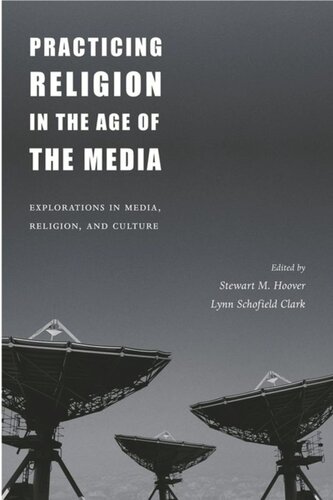

Most ebook files are in PDF format, so you can easily read them using various software such as Foxit Reader or directly on the Google Chrome browser.
Some ebook files are released by publishers in other formats such as .awz, .mobi, .epub, .fb2, etc. You may need to install specific software to read these formats on mobile/PC, such as Calibre.
Please read the tutorial at this link: https://ebookbell.com/faq
We offer FREE conversion to the popular formats you request; however, this may take some time. Therefore, right after payment, please email us, and we will try to provide the service as quickly as possible.
For some exceptional file formats or broken links (if any), please refrain from opening any disputes. Instead, email us first, and we will try to assist within a maximum of 6 hours.
EbookBell Team

4.3
18 reviewsFocusing on this intersection of the sacred and the secular, this volume gathers together the work of media experts, religious historians, sociologists of religion, and authorities on American studies and art history. Topics range from Islam on the Internet to the quasi-religious practices of Elvis fans, from the uses of popular culture by the Salvation Army in its early years to the uses of interactive media technologies at the Simon Wiesenthal Center's Beit Hashoah Museum of Tolerance.
Increasingly, the religious practices people engage in and the ways they talk about what is meaningful or sacred take place in the context of media culture—in the realm of the so-called secular.
Focusing on this intersection of the sacred and the secular, this volume gathers together the work of media experts, religious historians, sociologists of religion, and authorities on American studies and art history. Topics range from Islam on the Internet to the quasi-religious practices of Elvis fans, from the uses of popular culture by the Salvation Army in its early years to the uses of interactive media technologies at the Simon Wiesenthal Center's Beit Hashoah Museum of Tolerance. The issues that the essays address include the public/private divide, the distinctions between the sacred and profane, and how to distinguish between the practices that may be termed "religious" and those that may not.